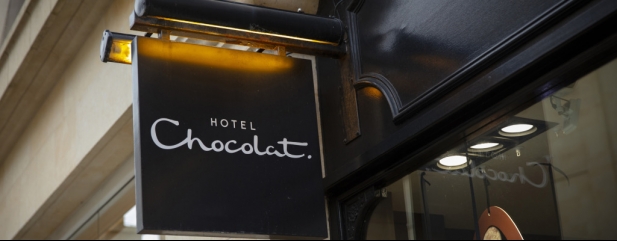Archived article
Please note that tax, investment, pension and ISA rules can change and the information and any views contained in this article may now be inaccurate.
Retail: how a hybrid of online and physical stores is proving a success

Retail has been at war with itself for at least the past decade as old-style bricks and mortar businesses tried to keep up with the new kids on the online block. Big names like BHS and Toys R Us vanished from high streets and retail parks, others like New Look underwent brutal CVAs, which is a way for companies in distress to pay off their debts over a fixed period of time.
Established businesses launched their own websites but for many the rot had already set in. A lack of investment, a failure to understand how the new world worked created a vulnerability, and when the first Covid lockdown forced closures the shift from old to new simply sped up. For behemoths like Arcadia the nailed-on overheads were too great and the need to pivot quickly impossible for a business that size.
The proportion of online retail spend jumped by almost 15% while Covid-related restrictions were in place, but it did slip back when people were once again given the choice of where to spend their cash.
Shopping as an experience still has its place, particularly for big ticket items where people want the chance to touch the merchandise before they commit. And since May the numbers have remained stubbornly static, a trend that’s certainly giving businesses like Boohoo (BOO:AIM) a growth headache.
Despite now resembling an online department store with many familiar names joining Boohoo’s stable, the lack of a physical presence might be becoming an issue for the company and one that could get more acute as the months progress.
With the supply chain stretched to breaking point delivery costs have skyrocketed at the same time many traditional retailers have managed to pare down at least their rents. That’s not to say bricks and mortar is enjoying a total renaissance. Primark is rethinking its stance on online, at least when it comes to attracting eyeballs as a transactional site is not yet on the cards.
The real winners seem to be retailers giving the customer what they want when they want it. That includes the choice of channel as well as the ability to buy online and collect or return the goods in-store.
Next (NXT) could be considered the swot of the retail world. After making what some might have considered a giant own goal by allowing rival brands to utilise its shops and delivery offer, Next has shot out of the changing room in the second half, making it a seriously superior competitor on a playing field that’s rather changed from its pre-Covid formation.
Next’s latest online sales growth would have been enough to make Boohoo weep and its stores have become a hybrid, both shop window and glorified warehouse.
Anyone thinking that Next’s performance is unique just needs to consider how Hotel Chocolat (HOTC:AIM) has emerged from the past 18 months as a business which has found a way to succeed both offline and online.
Even Amazon, the bastion of online sales, has just opened its first non-food store in the UK offering customers an opportunity to indulge their senses with its four-star merchandise.
Whether the experiment will result in hundreds of Amazon hubs depends on the customer engagement but if the Next omni-channel story is any indication those yellow smiles could become a staple of our high streets and not just our letter boxes.
THE VALUE OF PHYSICAL SPACES
Before the pandemic online-only retailers had begun experimenting with stores in prime locations and there’s nowhere quite as cool as London’s West End. The CEO of property company Shaftesbury (SHB) Brian Bickell took me on a tour of the company’s estate a couple of weeks ago and pointed out a couple of achingly hip stores that are otherwise ’online only’.
They’d grabbed the space initially as a glorified advert but had been pleasantly surprised by both the sales rung up in store and the uptick in the general area.
It’s a phenomenon also experience by Yorkshire-based Joe Browns when it opened its physical store in Sheffield’s Meadowhall shopping centre a few years ago.
As ever the key is location, location, location. No successful brand wants to be knocking up against empty spaces and post pandemic vacancy rates have hit an all-time high.
Shaftesbury’s boss refers to the phenomena as a ’cancer‘ and he’s pulling out all the stops to make sure it doesn’t spread through his estate.
Big boxes (warehouses) are being resized and repurposed and bucket loads of data is being pored over to ensure it owns retail property located in places with the best footfall.
The idea of retail as entertainment and experience is nothing new; it’s why shopping centre owners like British Land (BLND) have spent so much time and money reworking the leisure offer. Understanding retail is about more than just sales.
That’s a lesson online names are beginning to learn; their core consumer might be happy but attracting new shoppers will take more than just a jazzy website. Margins are getting tighter and with that decreases the ability to use price as the key tactic to draw customers in.
Investors need to be as savvy as shoppers themselves. They need to probe a retailer’s outlook and be sure they have appropriate plans in place to keep up with the changing landscape. It’s no longer a case of bricks or clicks but of a smart, workable mix of the two.
Important information:
These articles are provided by Shares magazine which is published by AJ Bell Media, a part of AJ Bell. Shares is not written by AJ Bell.
Shares is provided for your general information and use and is not a personal recommendation to invest. It is not intended to be relied upon by you in making or not making any investment decisions. The investments referred to in these articles will not be suitable for all investors. If in doubt please seek appropriate independent financial advice.
Investors acting on the information in these articles do so at their own risk and AJ Bell Media and its staff do not accept liability for losses suffered by investors as a result of their investment decisions.
Issue contents
Education
Feature
Great Ideas
- A costly TeamViewer error: hands up, we called this stock wrong
- ASML is still a core holding for investors despite big share price rally
- Bank of England prediction for rising insolvencies good for FRP
- Right time to own Ruffer as inflation pressures mount
- EasyJet shares are underpricing the airline’s recovery potential
- The fund that seeks to defend against inflation
Investment Trusts
Money Matters
News
- Entain’s silence on DraftKings takeover approach is puzzling
- IPOs still coming thick and fast despite some cancellations
- Knock-on effects from higher gas prices are wider than many think
- ASOS shareholders hope new CEO can revive share price growth
- Chubb’s $5.7bn Asian deal has positive read-across to Prudential
 magazine
magazine








